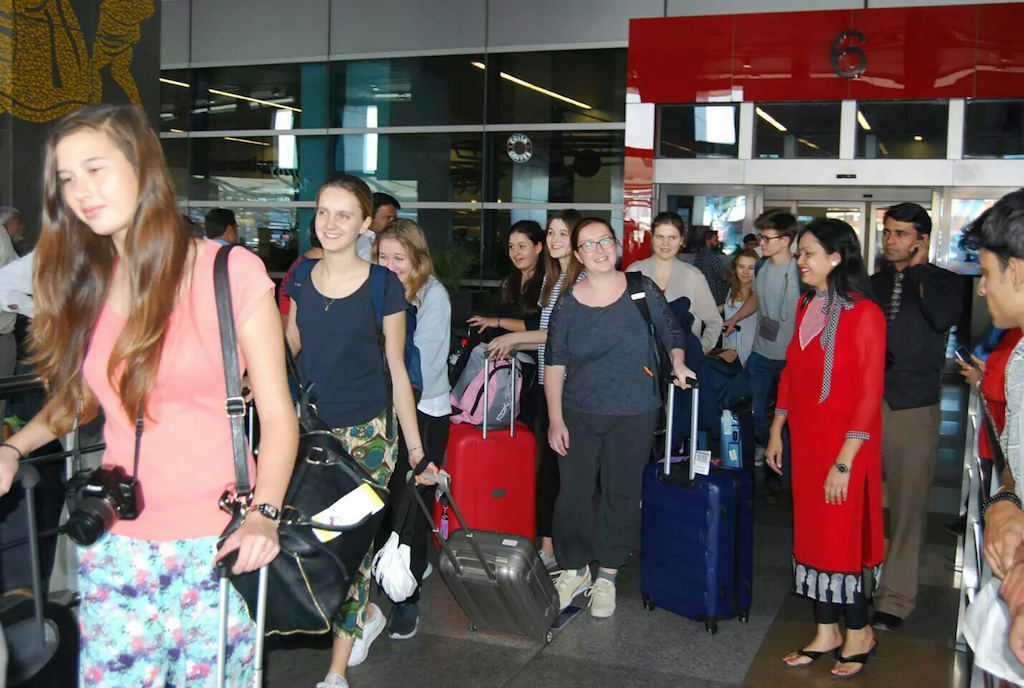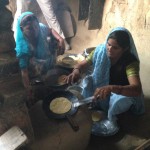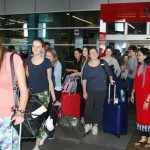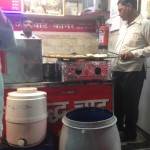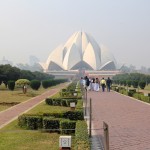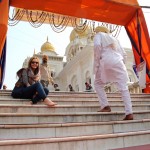In November, a group of students from our school visited New Delhi and its neighbourhood. We were hosted by local families and were involved in the school life of Gurukul The School. During our stay, we had a chance to see a lot of places, get to know the real life in India and participate in Hindu ceremonies.
Though being a great, life-changing experience, it wasn’t always easy to pull yourself together in such a different culture. Now, we’re preparing for Indians’ stay in our homes and hope to create them a great experience.
After arriving in India, you don’t really know what to expect. All of the stereotypes flowing in your head, not conforming with reality. You try to challenge yourself, telling: Whatever happens, it is already a great experience, try new things, don’t worry. What I was waiting for was a shock, something to take me by surprise, something really unexpected. I found it… many times and except for some inconveniences I had an amazing adventure.
One place, two worlds
India is a country of contrasts. While sight-seeing in Agra and Delhi, it was extremely easy to see this disparity. When we were buying souvenirs in a local market or eating at McDonald’s in a shopping centre, there were people starving and begging for money on the streets in front of the “indicators of good birth and success”.
While talking to my host mum, I realised that the problem is very hard to solve because of various factors, including the idleness of some of these people. In India it is sometimes easier to stay on the street. Nevertheless, young and wealthier people are creating different projects to help the poor and the unemployed.
Also, “one place, two worlds” is a very adequate expression when it comes to visiting places such as Taj Mahal. The architecture observed in country guides differs completely from reality. The Taj Mahal’s architecture is gone, we can’t observe it anywhere else except for other monuments.
Food and drinks
Indians eat very healthy… usually. Cooking at home is extremely important for them. It is always the woman who prepares the food with some assistance from the domestic help. Their food is very spicy, impossible to bare by Europeans. Thankfully, they were doing their best to make it less chilly for us. Indian families like to eat Panner (their regional cheese) with different sauces as well as chickpea with seasonings, always accompanied by rice or the traditional bread – Naan and Roti. They even have a dish very similar to our potato pancakes; eaten usually with yoghurt and butter. Some non vegetarian families, recognised as the groundbreaking ones, substitute Paneer with chicken – vegetarianism is still very common but not as much as years ago.
Despite having a healthy diet on regular basis, Indians love crisps and other different processed foods – including sweets and powder soups. I must say that I’ve never eaten as many packs of crisps as I did in November. Our Asian friends are also fond of extremely sweet juices – we had a chance (every day) to try litchi, mango, cranberry juice and much more. Indian food is irreplaceable and extremely tough to find in Europe when we’re dreaming about the same quality.
Wait, what do you mean? Domestic help in India?
Well, yeah. Domestic help is very common in India. Almost every family from the upper middle class has a few servants at home. These are usually young people from poor families living in neighbouring villages. Why usually? It happened in my host family, during my stay. The woman who was serving there wanted to stay at home in the village for some time but her holiday was already over. She didn’t return but sent her younger sister. The girl was seven year old and already knew what she was going do to in her life. Cleaning others’ houses. Moreover, she’s already started the job.
The only thing I could do to make her feel better (or rather make myself feel better, she was perfectly happy) was to hug her and see her smile. You don’t get a chance to hug a white person very often, maybe never, when you’re an Indian servant. And yes, it is very exciting for a young girl to get close to you.
Things Europeans just don’t understand
There are some significant differences between European and Asian countries. Through the last century our lifestyle and the way of looking at the world has changed completely. In India we can still spot a lot of habits which would be concerned old-fashioned here. The distance between our countries is visible not only on the map, but also in the way of thinking and in the attitude of different people observed on daily basis.
1. Arranged marriages are more popular than love marriages
Also, it is the best to make a love marriage an arranged one. The families are very important for Indian people. When they arrange a new family, they try to find just the right person. Suiting the other with believes, family status, character and even diet. What’s more important, the family does everything to keep the couple together, they help them in tough situations, raising children and try to solve different problems. If two people fall in love and make a love marriage, it is much better and common to arrange it a little as this way the couple gets proper support from their families.
2. No, you can’t come to your friend’s house and open a fridge
Guests are gods. When you stay at somebody’s house, they will bring you everything. Especially if you’re a foreign guest after a long journey. Don’t go to the kitchen, ask a servant or a member of the family to do it for you. It’s absolutely not rude, it’s very polite. When they see they can help, they think you feel comfortable, just like at home. It is also very important to say the elder that you love them and hug them in the morning and in the afternoon. It is a great sign of politeness, they will also give you a blessing by touching your head, just like our catholic grandmas do.
3. They will take a lot of pictures of you simply because you’re white
For Indians, it’s a huge attraction to see a white person. They’ll want to touch you, talk to you, see your smile and make this moment eternal by taking a picture! While sight-seeing, we were being approached by dozens of people trying to sneak a pic of us. The Indian girls were terrified by that because it’d be a huge shame for their families to see their pictures with strange men made public. Fortunately, it’s not a shame for us, because we’d be in huge trouble!
4. Dancing on the bus is perfectly ok. Teachers do it too
We usually danced our way to different destinations in Delhi. We were all crowding in the small corridor between the seats sweating and laughing. Because why not? For safety reasons? Such things are not important. It will be alright, someone will catch you if you fall in the front. There is no better way to meet new culture than to chill out and dance together. See the moves, listen to the local music, involve in the fun.
Indians are coming in April
Indian exchange students will be coming to Poland in April. We will try to give them na amazing time that will include showing them around Warsaw and introducing them to Polish culture. They will definitely experience a culture shock, but shocks don’t necessarily need to be negative. Along with other students that went to India for the exchange, I hope that they will be inspired by our culture as much us we were by theirs.
Katarzyna Rylewicz
